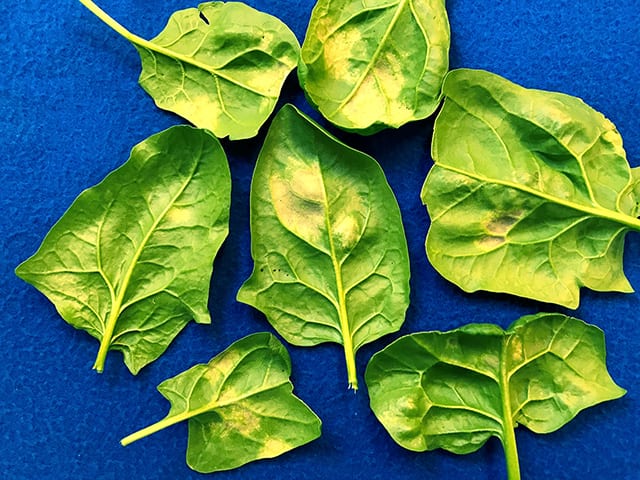Symptoms of downy mildew on spinach are patches of yellow tissue visible on the upper surface of leaves. Below these spots on the lower surface the pathogen produces its spores which are diagnostic and thus important to look for. The pathogen growth initially and following spore dispersal is white to gray because this is the color of the structures (sporangiophores) that the spores develop on. The spores (sporangia) are brown to slightly purplish. This pigmentation provides some protection from uv radiation during wind dispersal of the spores. The best time to look for pathogen growth is early morning following a humid evening as this favors spore production and thus the pathogen growth will be easy to see due to abundance of brown spores. Spores are dispersed during the middle of the day. When sporulation is not evident on leaves with yellow tissue, putting the leaves upside down on wet paper towel in a closed plastic bag overnight will induce sporulation if the leaves are infected. See basil downy mildew page. Leaf yellowing also occurs with white rust, but that pathogen produces distinctly different spores.
Following images are leaves from an infected commercial crop in an unheated polyhouse (winter tunnel) in March 2018. Affected varieties were Giant Winter, Reflect, and Space. Pathogen was determined to be race 15. This was the first known occurrence of downy mildew on spinach on Long Island in over 20 years. There were no other reports of downy mildew on spinach in 2018 suggesting the pathogen did not spread to other plantings. See Cornell Vegetables website article for additional information for additional information about this disease and other occurrences on spinach elsewhere in the Northeast since 2014.
Please report if you see this disease! Email: mtm3@cornell.edu






